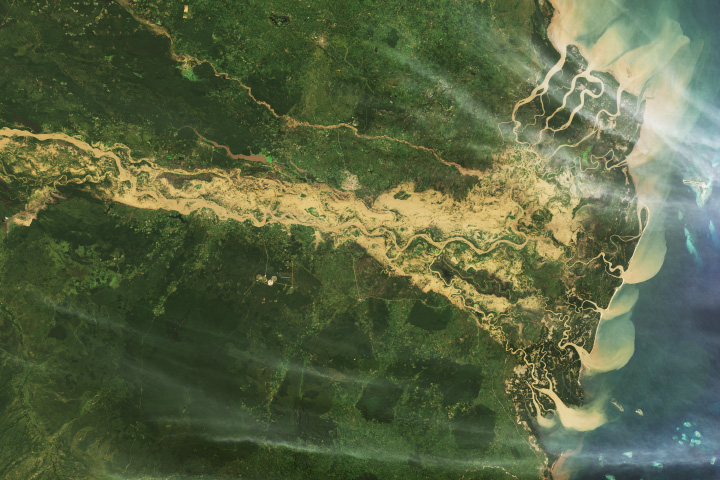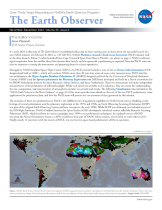- Home
- Missions
- Data
- Communications
- People
- The Earth Observer Newsletter




Recent Imagery
You will be directed to the NASA Visible Earth webpage when you select Images by Mission below, or click on the images at right that are randomly generated to represent four out of all possible topics.
The Earth Observer: Jul - Aug, 1995
In This Issue
Click title below to view page
The Tenth EOS Investigators Working Group Meeting ... 3
Science Team Meetings
9th Advanced Spaceborne Thermal Emission and Reflection Radiometer (ASTER) ... 18
Fourth International Multi-frequency Imaging Microwave Radiometer (MIMR) Science Advisory Group Meeting ... 22
Tropospheric Emjssion Spectrometer (TES) .... 24
Multi-angle Imaging SpectroRadiometer (MISR) ... 25
Moderate-Resolution Imaging Spectroradiometer (MODIS) .... 29
Stratospheric Aerosol and Gas Experiment (SAGE) III ... 36
Articles
SAGE III Preliminary Design Review .... 39
The 3rd NIIEM NASA Meteor-3M/SAGE III Interface Meeting .... 43
The Good, The Bad, And The Useful: Do Things Ever Go Right? .... 46
Committee on Earth Observation Satellites Ocean Color Meeting .... 50
EOS Workshop on Land Surface Evaporation and Transpiration .... 52
EOSDIS Core System Releases 'Earth Pages' for Public Use in September 1995 .... 57
Physical Oceanography DAAC Users Working Group Meeting ... 58
The Multi-Center Airborne Coherent Atmospheric Wind Sensor .... 59
New CODATA Study On Issues In The Transborder Flow Of Scientific Data ... 63
Mitigation of Methane Emissions from Irrigated Rice Agriculture ... 64
Announcements
New Director of Goddard .... 21
New Satellite Image Map of South Florida Will Aid Ecosystem- Restoration Efforts ... 35
EOS/Goddard Scientists Earn Prestigious Awards ... 62
Cooperative Work Develops Low-Cost Digital Terrain Flyby Program .... 66
Science Calendar ... 67
Global Change Calendar .... 67
The Earth Observer Information/Inquiries ... Back Cover
Editor's Corner
Michael King, EOS Senior Project Scientist
The most significant event of this summer was the review of the U. S. Global Change Research Program (USGCRP) by the National Academy of Sciences' Board on Sustainable Development. This review, co-chaired by Ed Frieman (Scripps Institution of Oceanography) and Berrien Moore (University of New Hampshire), was held in La Jolla, July 19-28. This was the first part of a two-part review and, as such, focussed largely on NASA's contribution to the USGCRP, Mission to Planet Earth, and the Earth Observing System. A final report was delivered to all members of the U.S. Congress as well as the White House Office of Science and Technology Policy. Among the many recommendations contained in this report were: (i) success in attacking the long-term scientific challenges of the USGCRP requires an adequate and stable level of funding that promotes management efficiencies and encourages rational resource allocation, and (ii) further budgetary reductions or imposed constraints on technical options could require the elimination of key sensors, slips in schedule, loss of data continuity, and the elimination of advanced technology development that could enhance future research and lower costs.
Some underlying tenets of the report included the need to: (i) maintain a science-driven approach to observational and information management technology, and (ii) implement the first group of EOS components without delay, including launching Chemistry-1 on schedule (December 2002) - focusing the tropospheric components of Chemistry-1 on the global distribution of ozone and its precursor gases. With regard to EOSDIS, the report recom-...
Read more...

